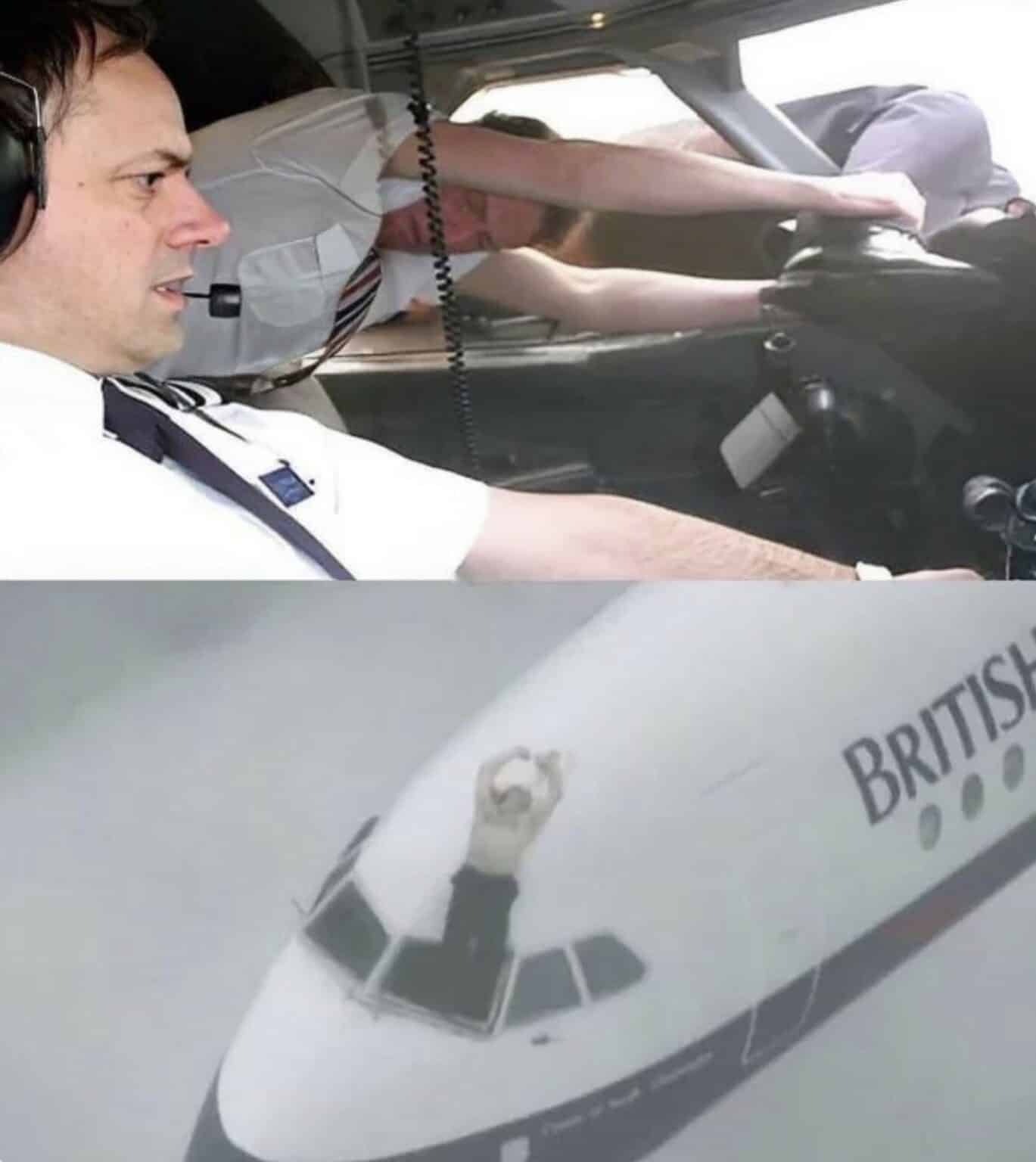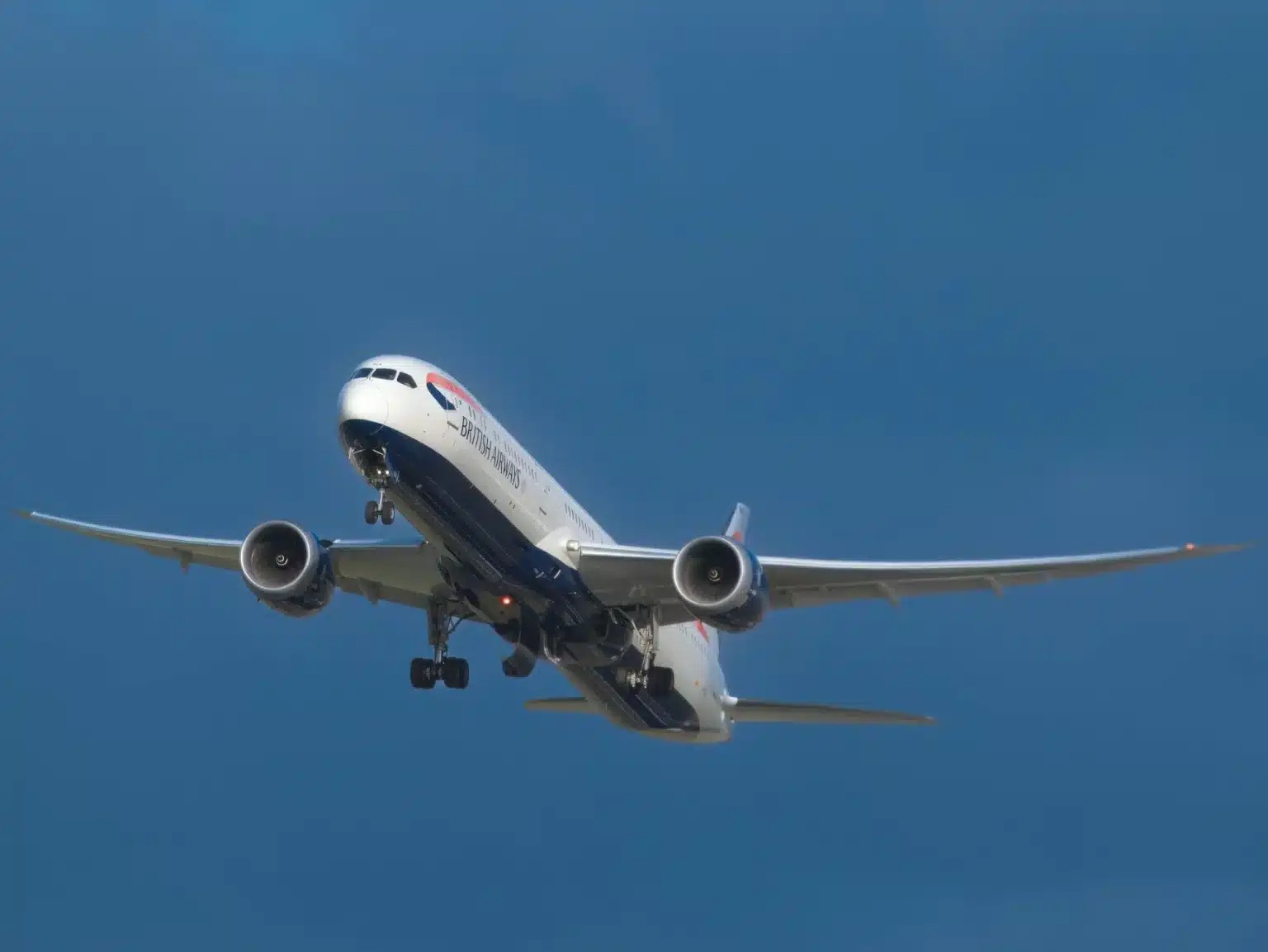In 1990, British Airways pilot Tim Lancaster endured a harrowing and surreal ordeal that forever changed his life.
During a routine flight from Birmingham to Málaga, Spain, the cockpit windshield suddenly shattered at 17,000 feet, violently sucking Lancaster halfway out of the aircraft. This rapid decompression triggered a terrifying chain of events, leaving the captain dangling outside the plane. Thanks to the quick and heroic efforts of his crew, Lancaster miraculously survived. This extraordinary story is a powerful testament to human resilience and the dedication of a skilled flight crew.

A Routine Flight Turns Catastrophic
What started as an ordinary flight quickly became a life-or-death situation when the cockpit window exploded. The sudden decompression forced Captain Lancaster out of his seat, with only his legs remaining inside the cockpit. Cruising at high altitude and speed, the freezing thin air compounded the danger. Though initially shocked, co-pilot Alastair Atchison quickly regained control to stabilize the aircraft. At that critical moment, flight attendant Nigel Ogden, who was heading toward the cockpit, arrived just in time to assist.
Nigel Ogden’s Courageous Rescue
As Lancaster was being pulled further out, Ogden grabbed hold of his legs, preventing him from being fully ejected. For 20 tense minutes, Ogden held on tightly while Atchison piloted the plane. Passengers watched in horror as crew members fought to save the captain. One passenger recalled, “I saw a body hanging out the window, with two men and a woman holding onto his legs, trying to stop him from being sucked out.” Ogden’s determination was crucial in preventing the captain from striking the engines or tail, which could have had fatal consequences.
Calm Under Pressure: The Co-Pilot’s Role
While Ogden clung to Lancaster, Atchison stayed composed, descending to a lower altitude and preparing for an emergency landing. With the windshield gone and part of the captain’s body exposed, the flight crew coordinated to avert disaster. Another flight attendant, Simon Rogers, soon relieved Ogden, who was suffering frostbite and a hand injury. Together, the crew safely landed the plane at Southampton Airport, about 70 miles southwest of London. Passengers remained shaken, struggling to grasp what had just happened.

A Miraculous Outcome
After 20 agonizing minutes, rescuers pulled Lancaster back inside the cockpit. Despite frostbite, fractures, and shock, he survived against all odds. Firefighters on the tarmac rushed to assist him immediately. Investigators later revealed that the windshield had been replaced just days prior and that such a failure was an unexpected anomaly.
Aviation Experts Weigh In
The incident was later featured on the popular show Mayday, highlighting the heroic crew and Lancaster’s survival. The aircraft involved was a British Aircraft Corporation (BAC) 1-11, a sturdy twin-engine plane widely used for short domestic flights in the late 20th century. Known for its durability, the BAC-111’s strong construction and toughened cockpit glass helped maintain stability despite the catastrophic window failure, which experts deemed a “freak occurrence.”

The Science Behind Flight and Survival
This extraordinary event underscores the remarkable engineering that enables airplanes to endure extreme conditions:
- Wind Force Resistance: Commercial jets can handle winds exceeding 100 mph at high altitudes, maintaining stability through robust wing design and aerodynamics.
- Aircraft Weight: Planes weigh hundreds of thousands of pounds, supported by powerful engines and precise engineering that allow them to stay airborne.
- Flight Mechanics: Airplanes generate lift by manipulating air pressure over their wings, while engines provide thrust and control surfaces manage direction.
Conclusion
Tim Lancaster’s survival after being partially ejected from his plane stands as an incredible example of human endurance and teamwork. Despite facing unimaginable conditions, he held on for 20 minutes before being rescued—an achievement many believed impossible. His story highlights not only the strength of the human spirit but also the advanced technology that keeps planes safely in the sky.
The bravery of flight attendant Nigel Ogden and the steady hand of co-pilot Alastair Atchison proved that successful flights depend as much on human courage and cooperation as on engineering marvels. Together, they turned a near-tragedy into a legendary tale of survival.
